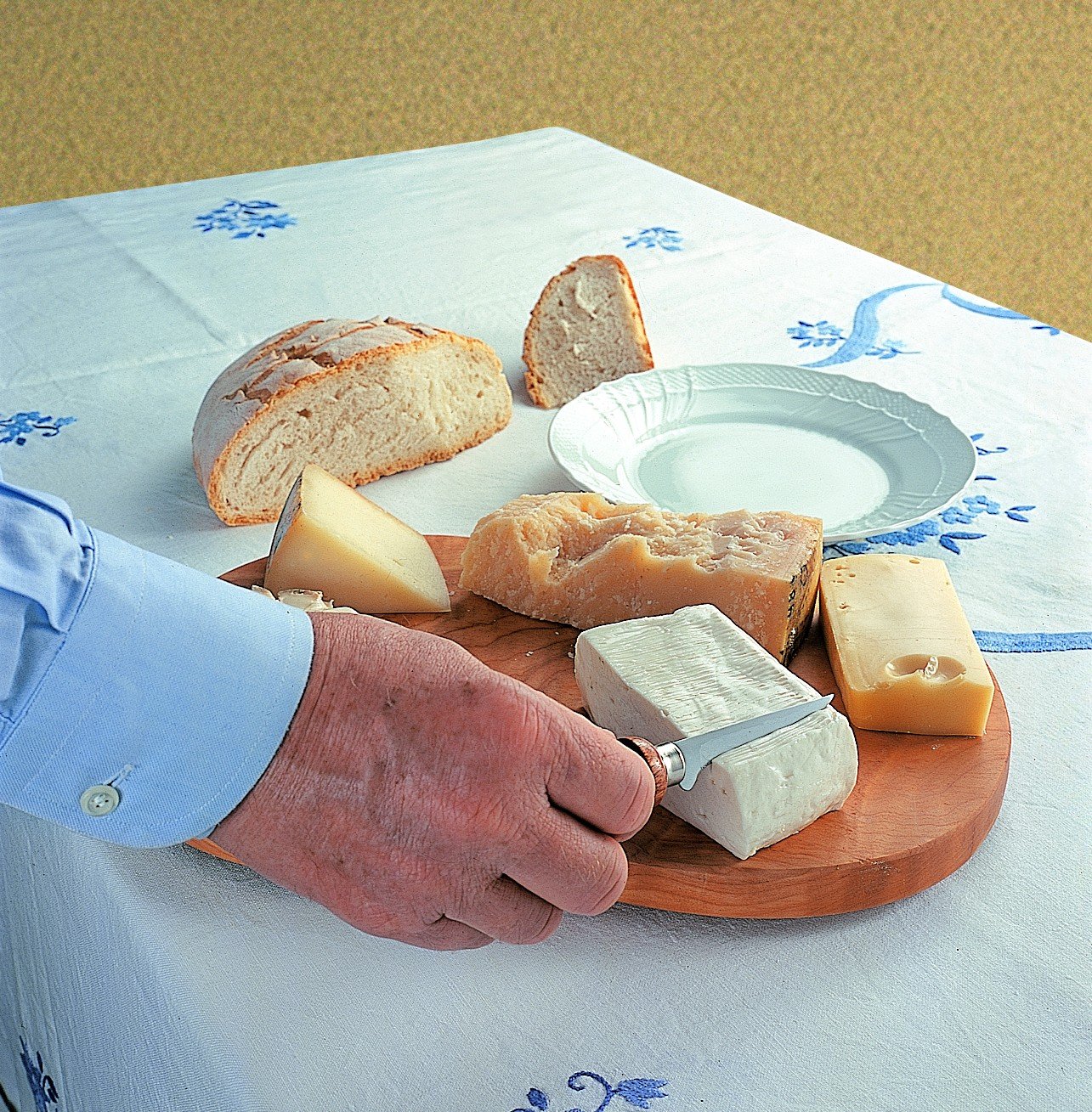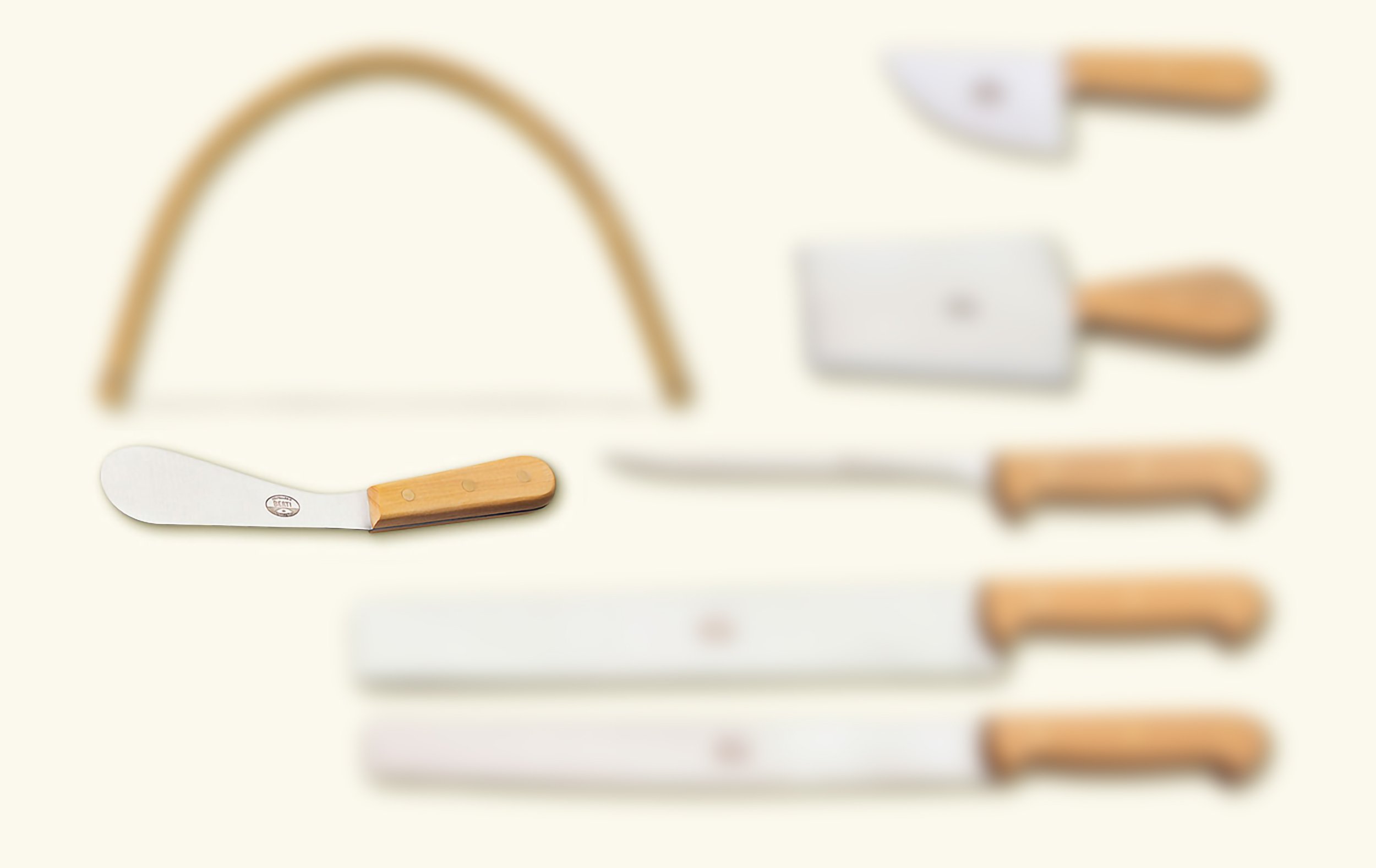A Guide to Berti Cheese Knives and Their Use

A Knife For Every Slice
Cheese can be a complicated business and cutting it, a delicate process. The natural way in which a cheese ages and ripens means its flavor is often inconsistent across its body. So, a piece cut from near the crust may not taste the same a piece cut from the middle. Ideally, cheeses should be cut and served in portions that contain all of these gradations in flavor. If you try doing this with a butter knife, you're not going to get it right and the cheese will likely split or chip away in crumbles. In order to cut properly, one needs to invest in the proper tools. Italian knife maker Berti makes a line of cheese knives (available individually or in a kit) for every kind of cheese you'll ever encounter. We hope this post makes each knife's individual purpose, properties, and use clear.
Berti Knives Italian Cheese Knife Set In Boxwood
Berti Bow Knife
It's said a shepherd first invented this improvement on the traditional Italian method of using a string (or even some intestine) affixed to two pegs to cut polenta, butter, and soft cheeses. The Berti bow knife's shape keeps the wire taught for flawless and artful cutting of stracchino, robiola, soft goat cheeses, ricotta, and fresh tometta.
Berti Bow Knife
Spatula Knife
Berti's spatula knife is shaped and slightly flexible for spreading very soft cheeses like Limburger and soft goat cheeses.
Berti’s Spatula Knife
Soft Cheese Knife
The Berti soft cheese knife cuts cleanly through soft cheeses like gorgonzola, mozzarella, robiole, and panerone without sticking or causing chipping or cracking. Begin each cut with a downward incline, creating a fulcrum at the end of the knife, push blade downward. If cutting very soft cheese, moisten blade with damp cloth to reduce friction and prevent the cheese from sticking.
Berti Soft Cheese Knife
Semi-Hard Cheese Knife
Light and easy to handle, the Berti semi-hard cheese knife is shaped to slice through semi-hard cheeses like fontina, raschera, Swiss, and Sicilian canistrato without chipping or tearing at the cheese, as a wider or thicker blade will. In order to cut through a crust, the knife is slightly curved in the center--like a wedge. This lets the knife be used like a saw with a short, oblique movement, when the crust puts up a lot of resistance. Cutting with uniform pressure prevents chipping at the cheese.
Berti Semi-hard Cheese Knife
Hard Cheese Knife
The Berti hard cheese knife has a thin blade and is wide and strong enough to carry the necessary force to cut through hard cheeses like asiago, hard bra, bitto, provolone, torna stravecchio, montasio, and calcagno. Force should be applied on the handle, using two hands when cutting particularly firm cheeses. Press on the back of the blade only if absolutely necessary. Cutting straight down with uniform pressure and balance will keep the cheese from breaking at the end of the cut.
Berti Hard Cheese Knife
Compact Cheese Knife
The Berti compact cheese knife is designed for deep and round cheeses like parmigiano, Sicilian canestrato, and gavoi. Its point is pressed into crust and pushed downward until the cheese falls away.
Berti Compact Cheese Knife
Trapezium Cheese Knife
Designed for large hard and semi-hard cheeses like Swiss, provolone, and soft pecorino, the Berti trapezium knife is held by its handle vertically and pushed through a block of cheese in one motion.
Berti Trapezium Knife








